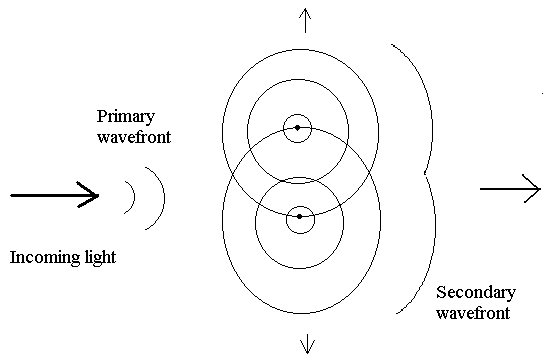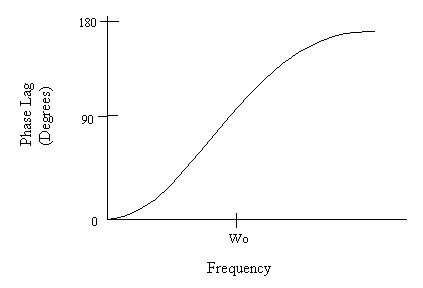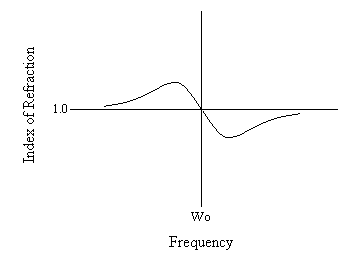Rayleigh Scattering
Rayleigh scattering – scattering of light
by particles that are less than 1/15 of the wavelength of the light.
Atoms and ordinary molecules which have a diameter of less than one
nanometer are included in Rayleigh scattering.
- When light
travels through a medium, it interacts with the medium and this causes the
scattering of light.
-
Photons are absorbed by molecules in the medium, and this causes the
molecules to vibrate and then re-emit the photons. When the photons are re-emitted, they have the same frequency
and wavelength, but are re-emitted in random directions.
-
There are a large number of photons interacting with the molecules, and
so photons are emitted from molecules in all directions and appear to be
“spherical wavelets” of light.
-
The scattering of light increases with frequency.
Therefore light with higher frequencies undergoes more lateral scattering
than light with lower frequencies.
-
In dense, uniform substances, there is little lateral scattering, and the
denser the substance, the less lateral scattering.
-
In media with random, widely spaced molecules, the light is scattered
randomly in all directions except for the direction that the incident light
was traveling. Therefore, lateral
scattering is possible and observable.
- In
dense, uniform media, scattered light will interfere
constructively in the forward direction, but interfere
destructively in all other directions.
Therefore, little or no lateral scattering will be observed.

Index of Refraction (n):
When light is transmitted through a material, each photon travels at the
speed of light, c. However,
Rayleigh scattering causes the transmitted wave to be out
of phase with the free-space (initial) wave.
The light is scattered many times as it travels through the medium.
Each time the light is scattered, the scattering causes a phase shift.
This translates to a change in the phase
velocity within the medium, of the beam from c. Therefore, there is an index of refraction for homogeneous
materials, n = c/v.
Transmission:
-
When the light is scattered, the “wavelets” interfere
constructively in the forward direction and form the secondary wave
front.
-
The superposition
of the primary and secondary wave front (both traveling at speed c) is the
transmitted wave.
-
At low frequencies, the molecules are able to vibrate almost in
phase with the light. However,
as the frequency increases, the vibration of the molecules lag behind, and the
phase lag increases with increased frequency
.
o
At resonance,
wo, the phase lag is 90 degrees.
As the frequency increases, the phase lag increases to 180 degrees.

-
The superposition
of the primary and secondary waves make up the transmitted wave.
If the secondary wave is phase shifted from the primary wave, the
transmitted wave is phase shifted from the primary wave (or free-space wave) as
well.
-
As the transmitted wave continues to travel through the material,
scattering continues to occur causing a greater phase lag or phase lead.
These changes in phase correspond to changes in speed of the wave
traveling through the material.
o
At frequencies less than wo, the transmitted wave lags the free-space
wave. This corresponds to a speed
v<c for the transmitted wave and an index of refraction, n>1.
o
At frequencies above wo, the transmitted wave leads the free-space
wave. This corresponds to a speed
v>c and an index of refraction, n<1.
o
At the frequency wo, the phase lag is 180 degrees, therefore
there is no phase shift, v=c and n=1.

The Blue Sky:
Rayleigh scattering increases with frequency.
Therefore, blue light is scattered more than red light.
When light from the sun interacts with our atmosphere, the lateral
scattering of blue light is much greater than the lateral scattering of the rest
of the visible spectrum, and this is partly why the sky appears blue.
References:
Hecht, Eugene. Optics. Addison Wesley:
San Francisco, 2002.
Rayleigh Scattering from Wikipedia. Retrieved April
21, 2003 from http://www.wikipedia.org/wiki/Rayleigh_scattering.



